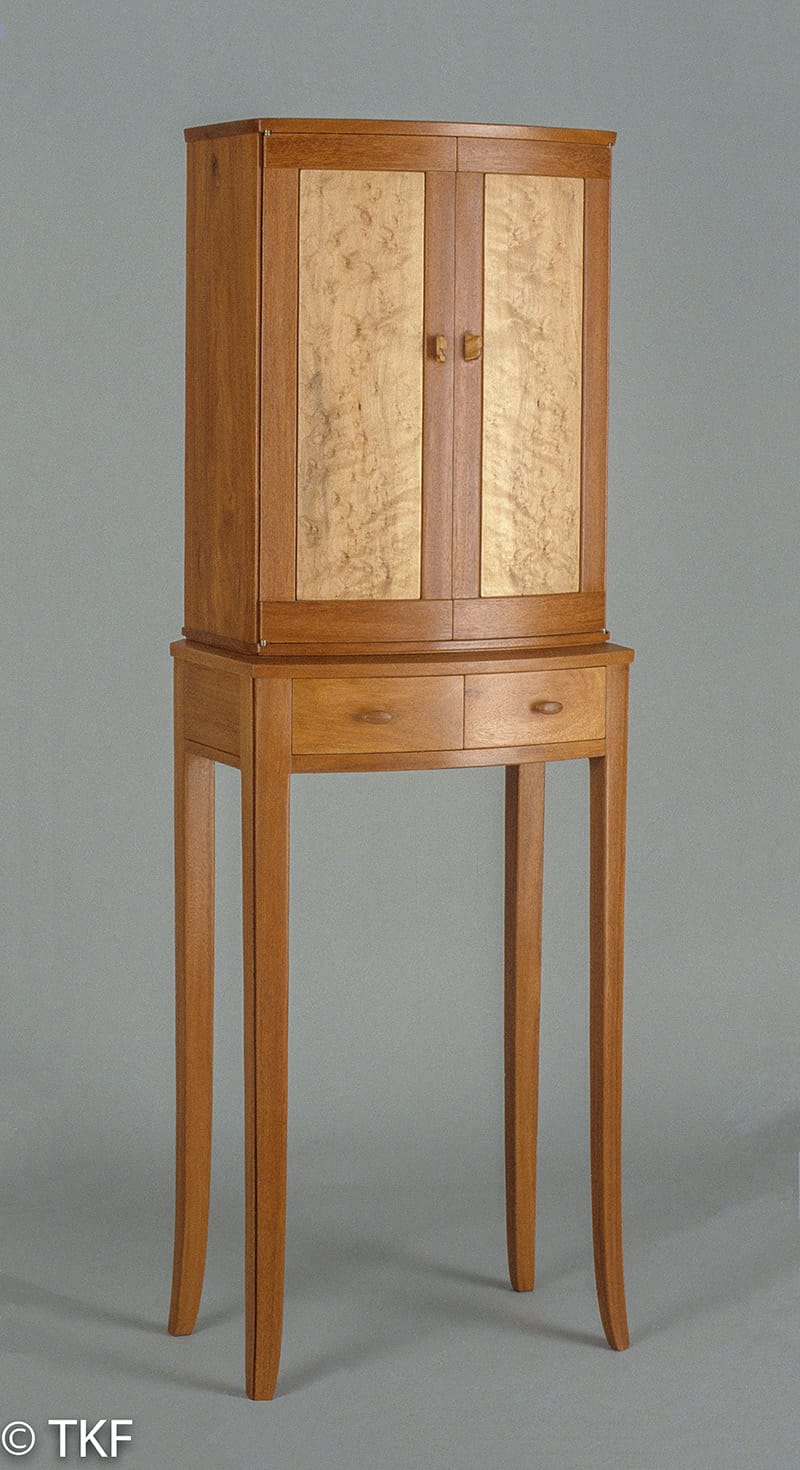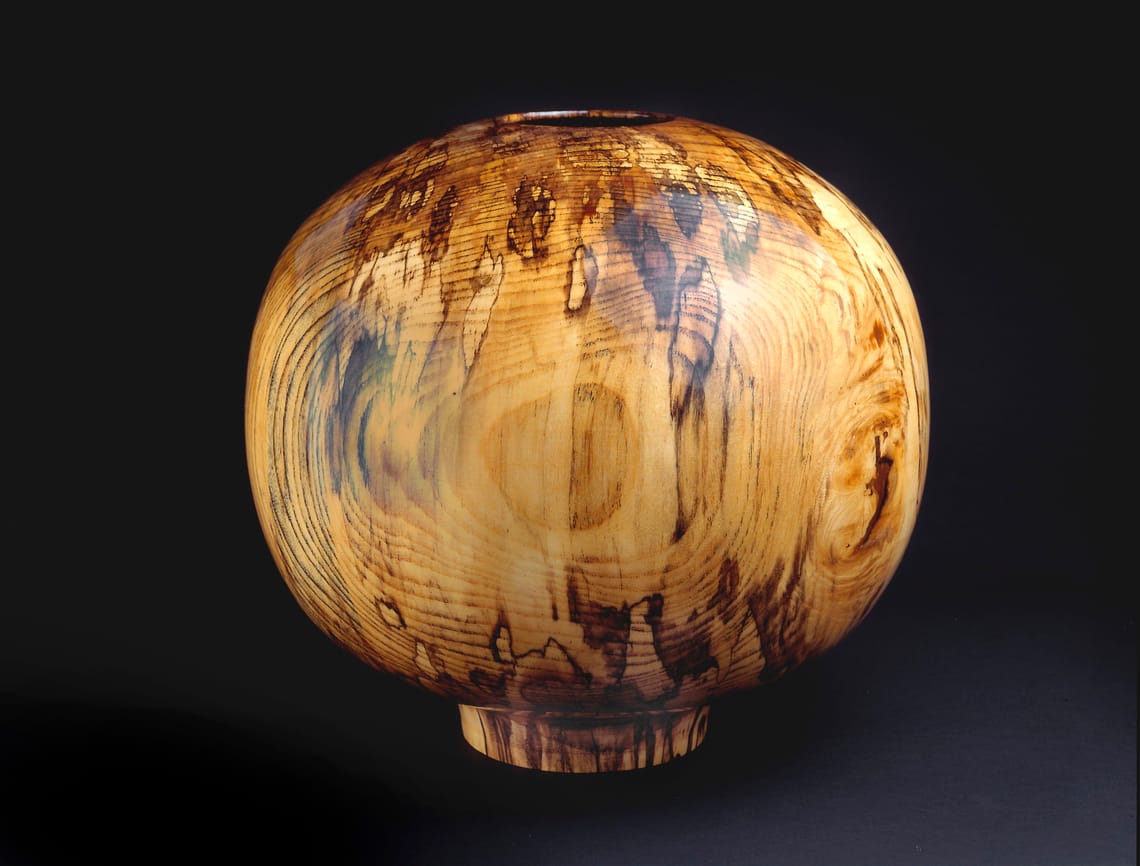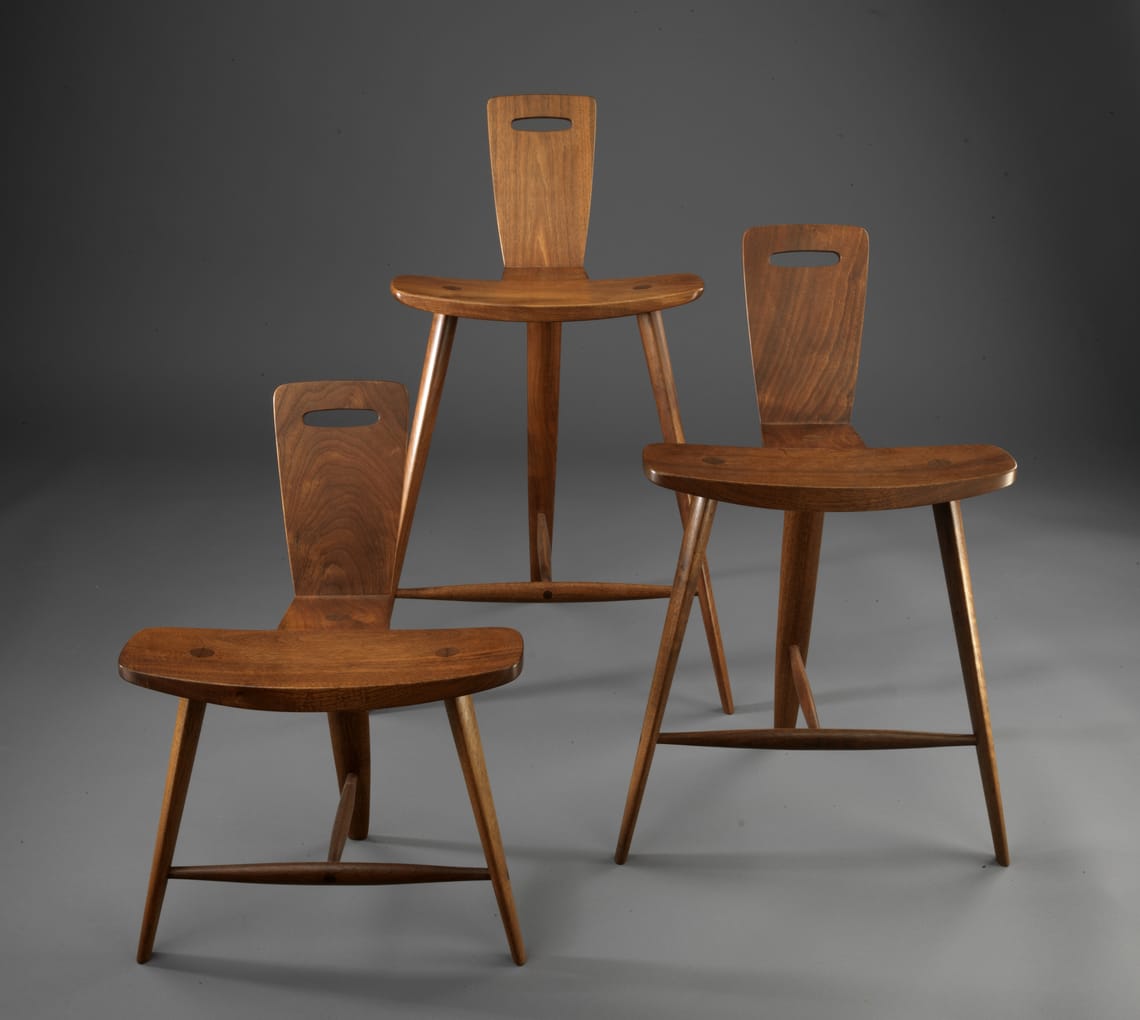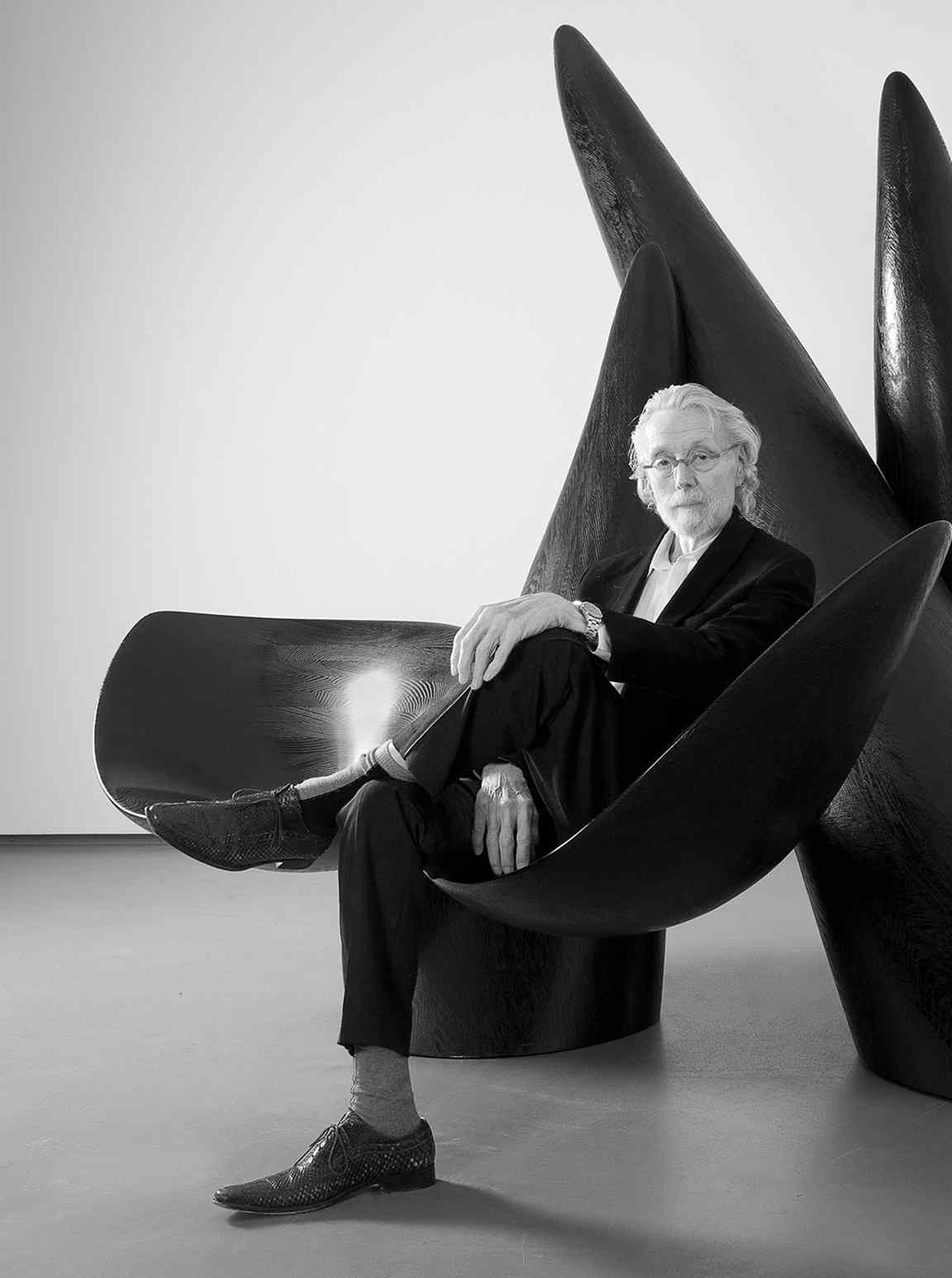
The Origins of Wendell Castle and His Impact on Art Furniture
I (Javier) first heard of Wendell Castle when I was trying to learn more about furniture design. The video above was my first introduction to him. He mentions that he was the least likely to succeed in his art class at the University of Kansas, yet he was the only one to achieve the level of success he did—all because he took a leap of faith.
He spoke about creativity, art, critical thinking, and technology, offering insights into his heart, style, and approach to design and innovation.
I hope you enjoy his speech as much as I did. It’s both encouraging and challenging for me, not only as a craftsman and businessman but also as someone striving to push the boundaries of my own potential.
"I often obey my own instincts, which I do not always understand." Wendell Castle
Wendell Castle revolutionized furniture design, blending sculpture with functional pieces. His innovative approach shaped the American Studio Furniture movement as we know today, and left a lasting mark on the art world.
Early Life and Education
Born in 1932 in Emporia, Kansas, Wendell Castle showed artistic talent from a young age. He studied industrial design and sculpture at the University of Kansas, graduating in 1958 with a BFA in industrial design and an MFA in sculpture.
Castle's unique vision began to take shape during his college years. He combined his industrial design skills with sculptural techniques, creating pieces that defied traditional furniture categories.
After graduation, Castle briefly taught at the University of Kansas. He then moved to New York in 1962, settling in Rochester. This move proved pivotal for his career and the development of art furniture.
Founding the American Studio Furniture Movement
In Rochester, Castle established his studio and began creating groundbreaking furniture pieces. His work challenged conventional ideas about furniture design and functionality.
Castle's innovative techniques, like stack lamination, allowed him to create organic, sculptural forms. These pieces blurred the line between art and furniture, earning him recognition as the "father of the art furniture movement".
His influence spread rapidly through exhibitions, teaching, and mentoring other craftsmen. Castle's work inspired a generation of furniture makers to explore new forms and techniques.
By the 1970s, Castle had become a central figure in American craft. His pieces, combining beauty and function, helped establish furniture as a respected form of fine art.
Philosophy and Design Principles
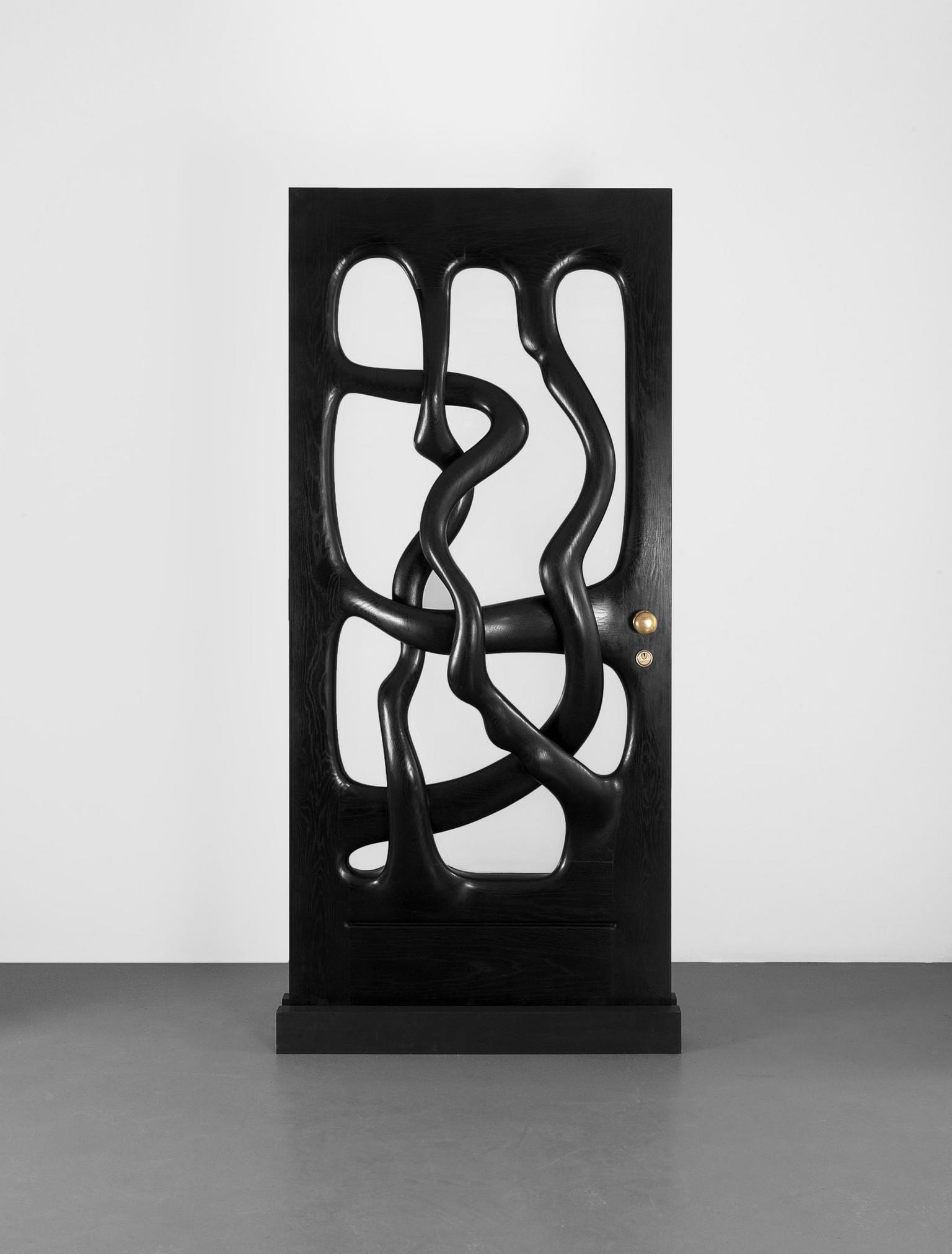
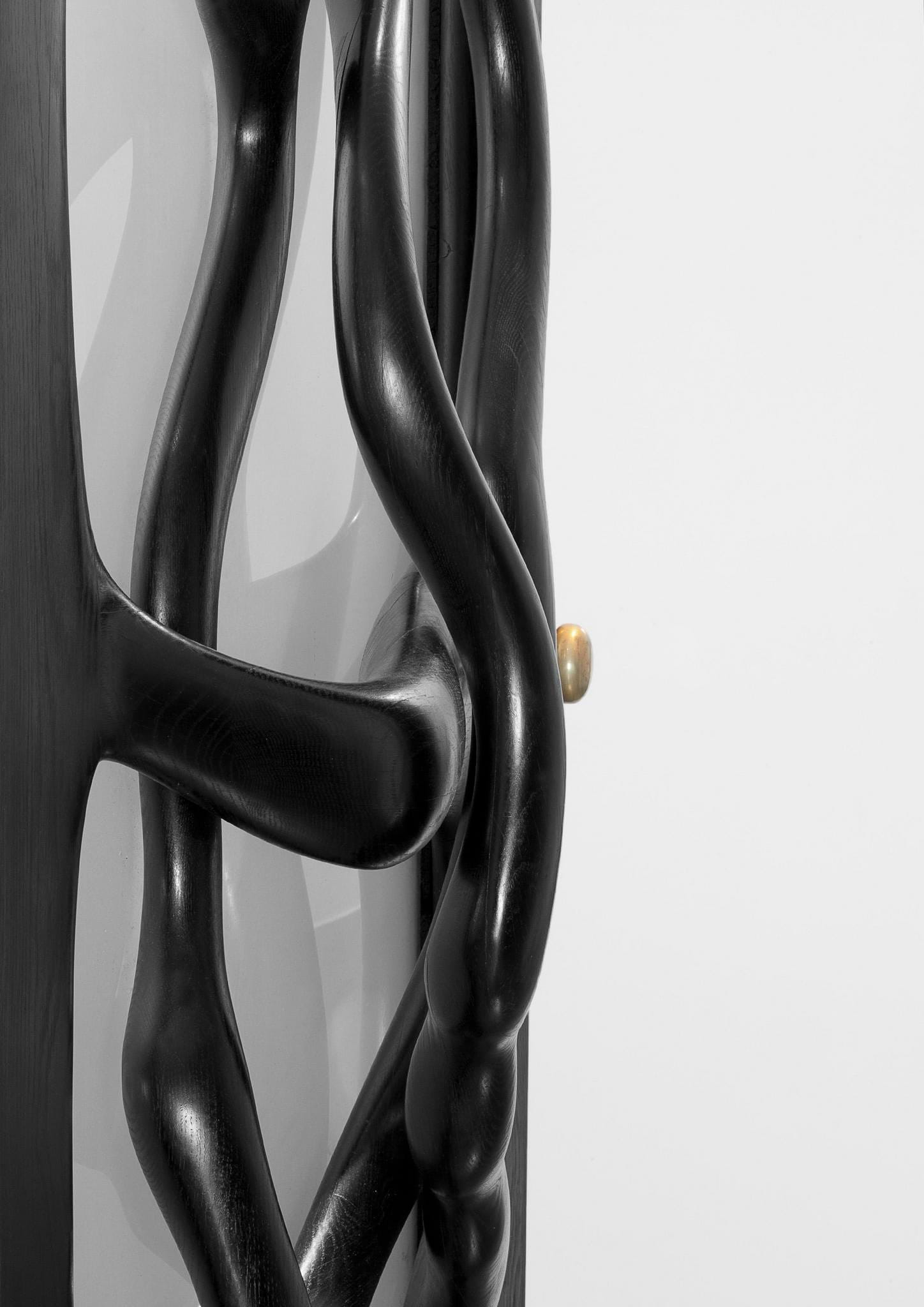
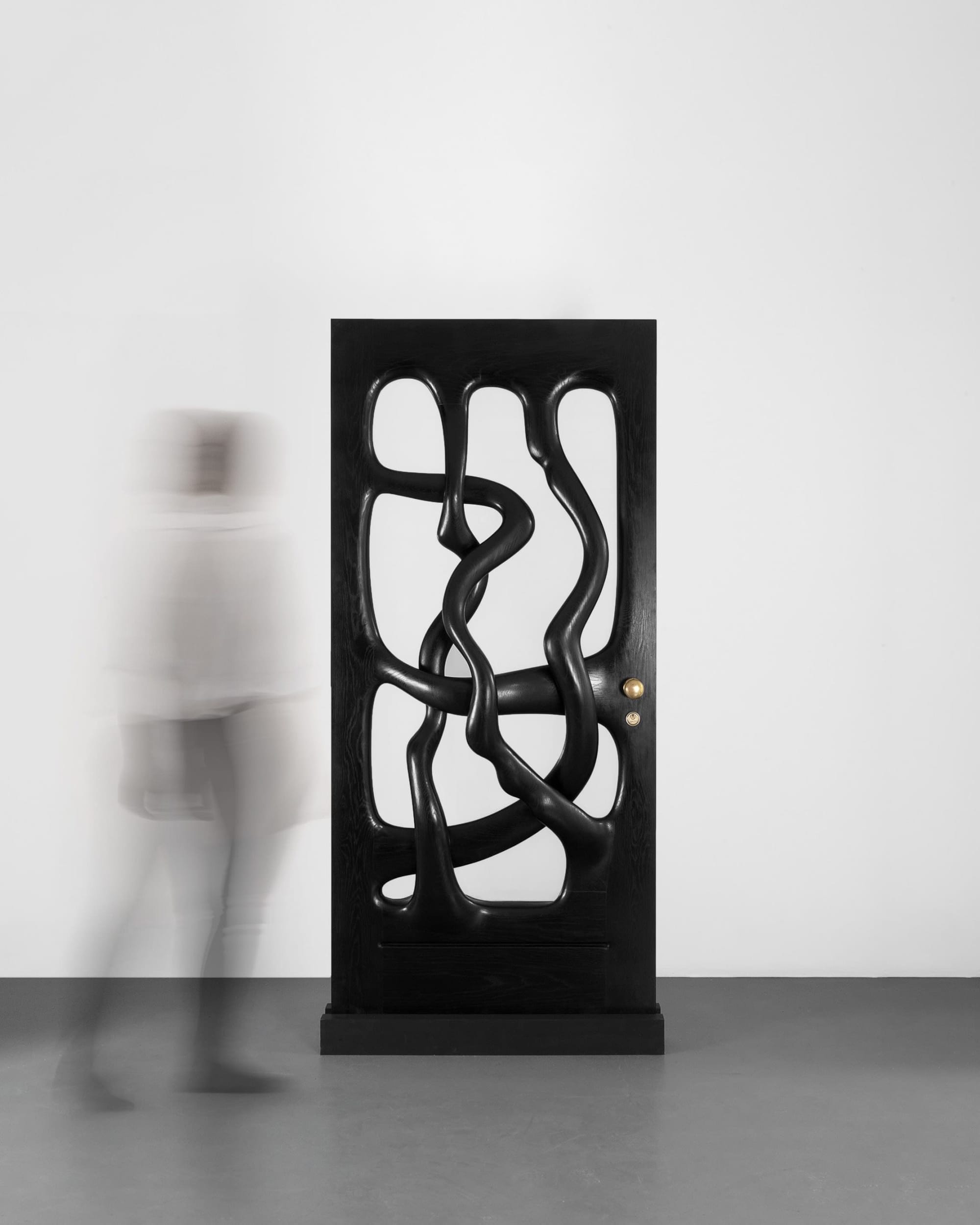
Source: https://carpentersworkshopgallery.com/works/decorative-fixtures/a-sculpted-door/ Photo by Photo by Jean Pierre Vaillancourt
"I live an impractical life. I dress impractically. I drive impractical cars. I make impractical furniture. I have no interest in being practical. I believe this kind of lifestyle is conducive to creativity." Wendell Castle
Wendell Castle's approach to furniture design blended artistic vision with functional purpose. He sought to create pieces that were both beautiful and useful, challenging traditional ideas about what furniture could be.
Blurring Traditional Boundaries of Art and Design
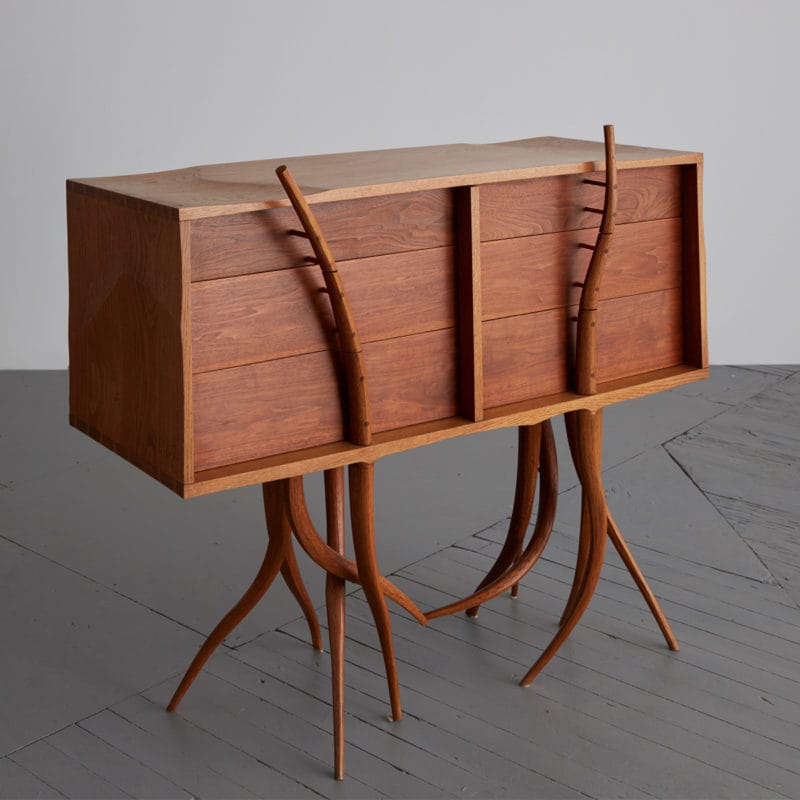
Castle's work broke down the walls between art and furniture. He saw chairs, tables, and other items as more than just things to use. They were sculptures people could interact with.
His designs often looked like living creatures or strange shapes from nature. A chair might have curves like a tree or look like an animal ready to move. This playful style made people think differently about everyday objects.
Castle believed furniture could be expressive and emotional, not just practical. He wanted his pieces to surprise and delight users, bringing art into daily life.
The Harmony of Form, Function, and Aesthetic
Castle aimed to balance looks, use, and artistic value in his designs. He didn't think furniture had to be boring to work well.
His pieces were often sculptural and eye-catching, but still comfortable and usable. A table might have an unusual shape, yet provide a flat surface for dining or working.
Castle drew inspiration from organic forms in nature. His designs featured smooth curves, irregular shapes, and flowing lines. This approach created furniture that felt alive and in motion.
He used new materials and techniques to bring his ideas to life. This mix of craft and innovation helped Castle create truly unique pieces that were both functional art and practical furniture.
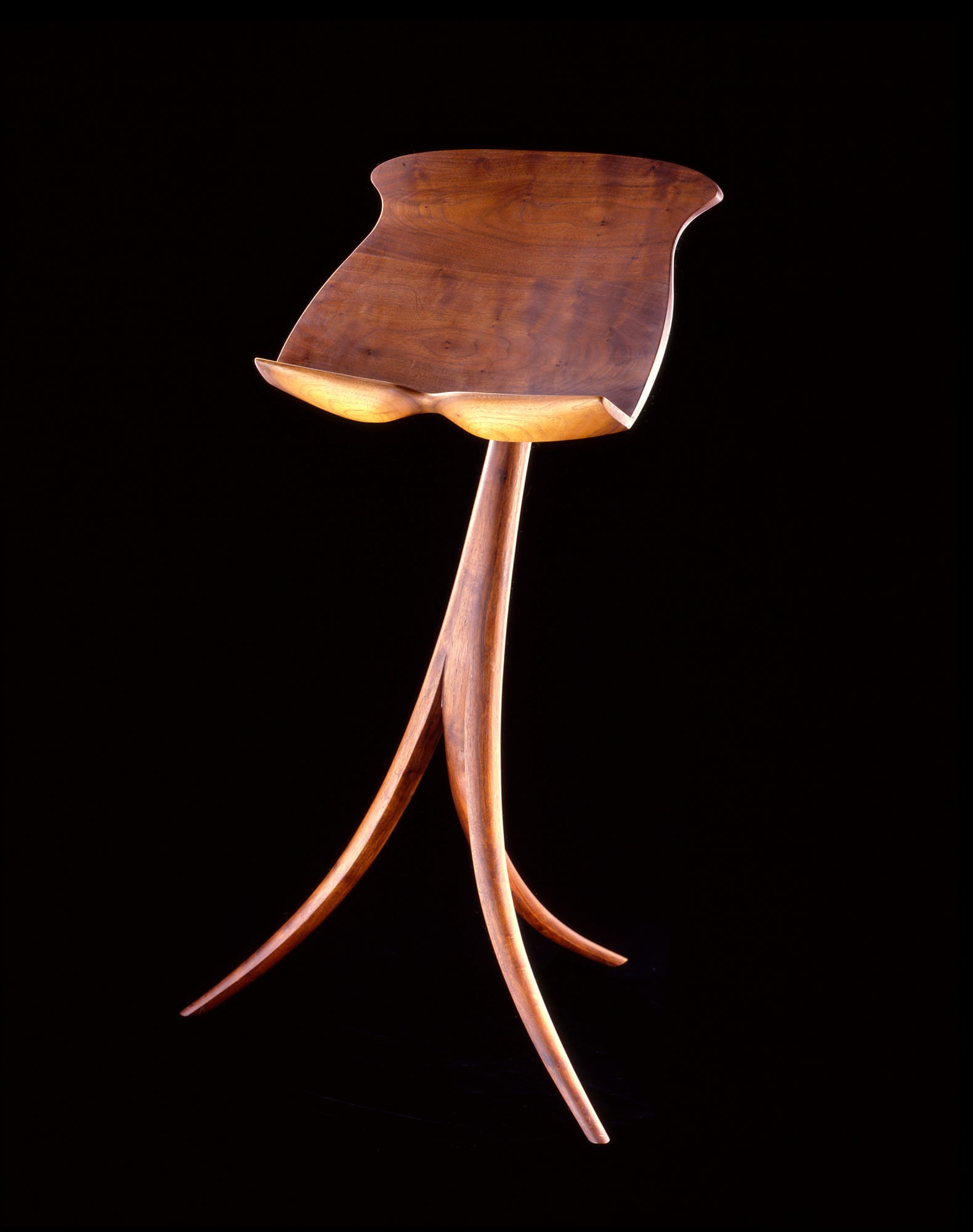
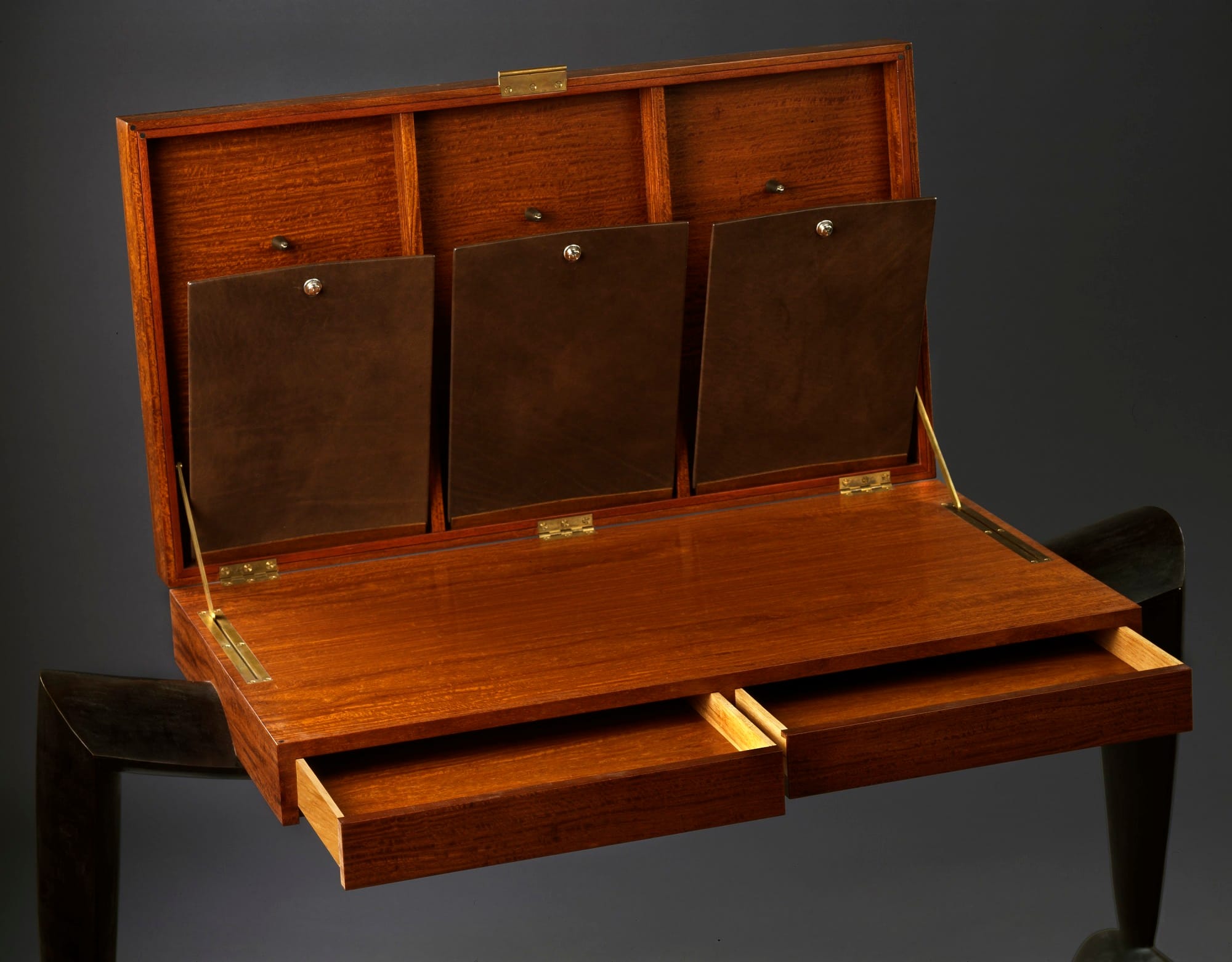
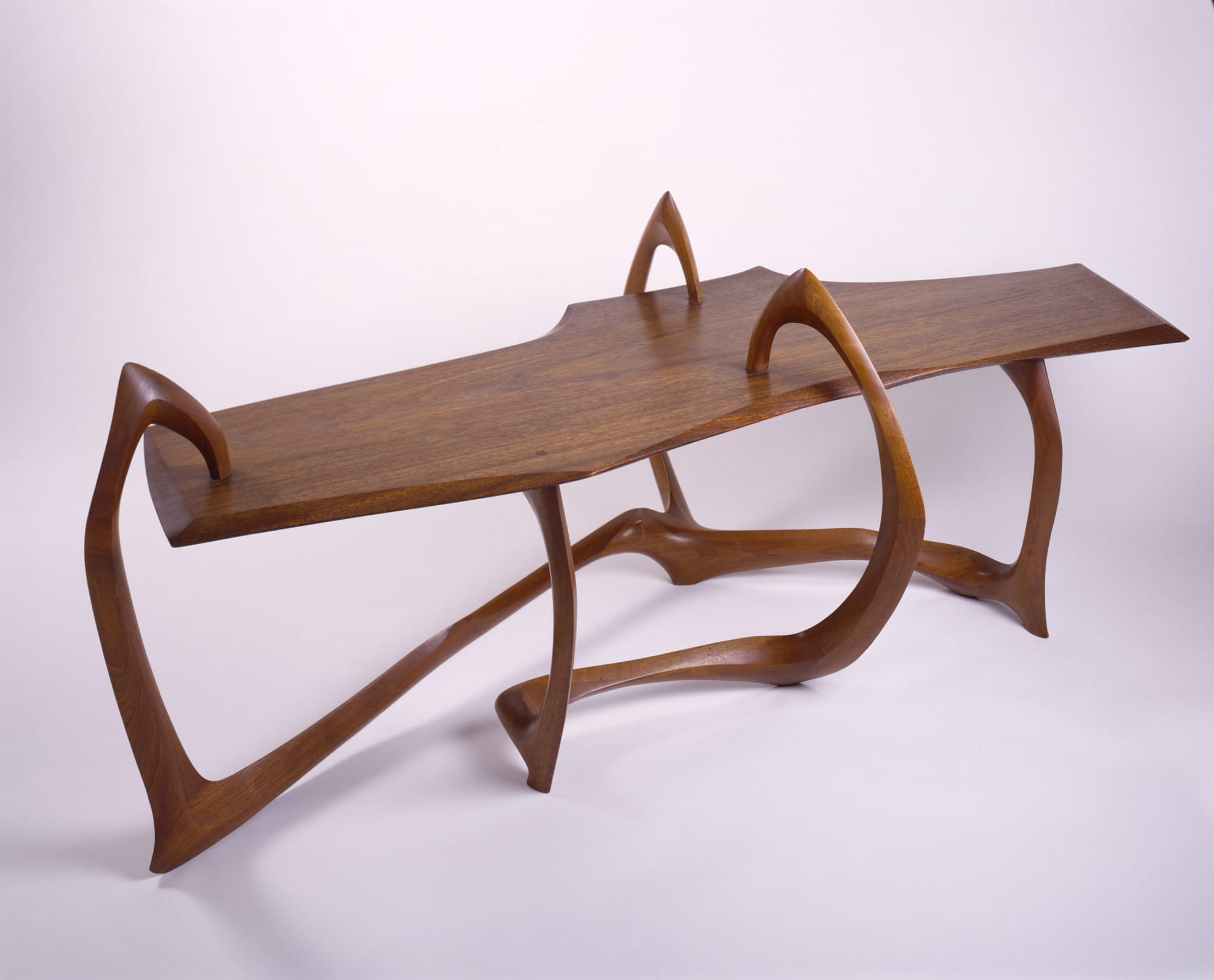
Source: Wendell Castle, Music Stand, 1975, walnut, 42 1/8 x 26 3/8 x 19 1/4 in. (107.0 x 67.0 x 49.0 cm), Smithsonian American Art Museum, Museum purchase, 1975.168 | Wendell Castle, Desk with Clock II, 1991, ebonized mahogany, coachwood, patinated bronze, quartz movement and leather, (closed): 37 1/2 x 54 x 21 in. (95.3 x 137.2 x 53.3 cm) (open): 50 1/4 x 54 x 40 in. (127.7 x 137.2 x 101.6 cm), Smithsonian American Art Museum, Gift of Peter T. Joseph, 1998.34.1 | Wendell Castle, Coffee Table, 1958, American walnut and padauk, 23 3/8 x 63 1/2 x 31 in. (59.4 x 161.3 x 78.8 cm.), Smithsonian American Art Museum, Gift of the Ruhe family in memory of Dr. Edward Lehman Ruhe, 1993.24
Innovative Techniques and Materials
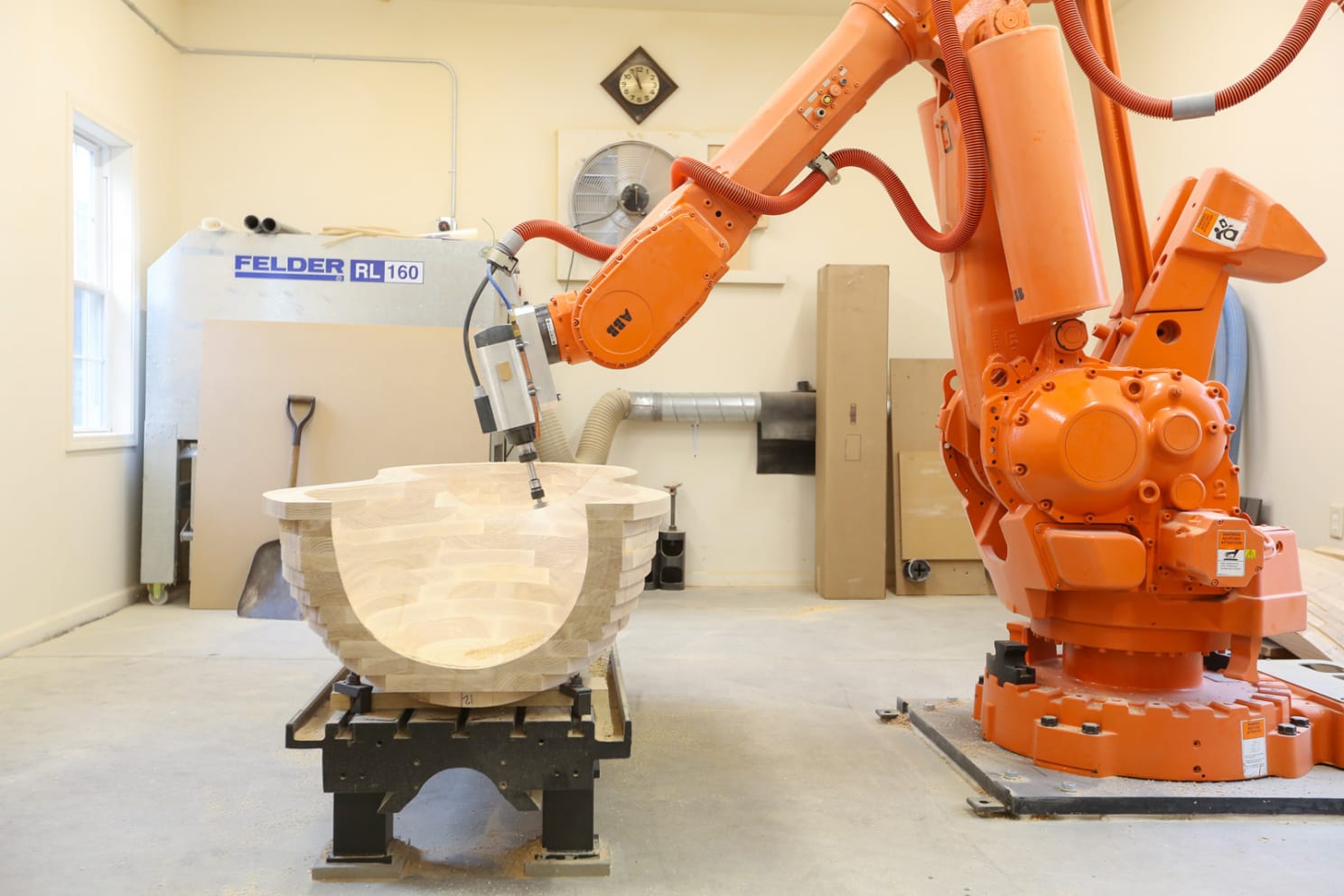
Wendell Castle revolutionized furniture design through his pioneering use of materials and methods. He pushed the boundaries of what was possible, creating sculptural pieces that blurred the line between art and furniture.
Advent of Stack-Laminated Wood
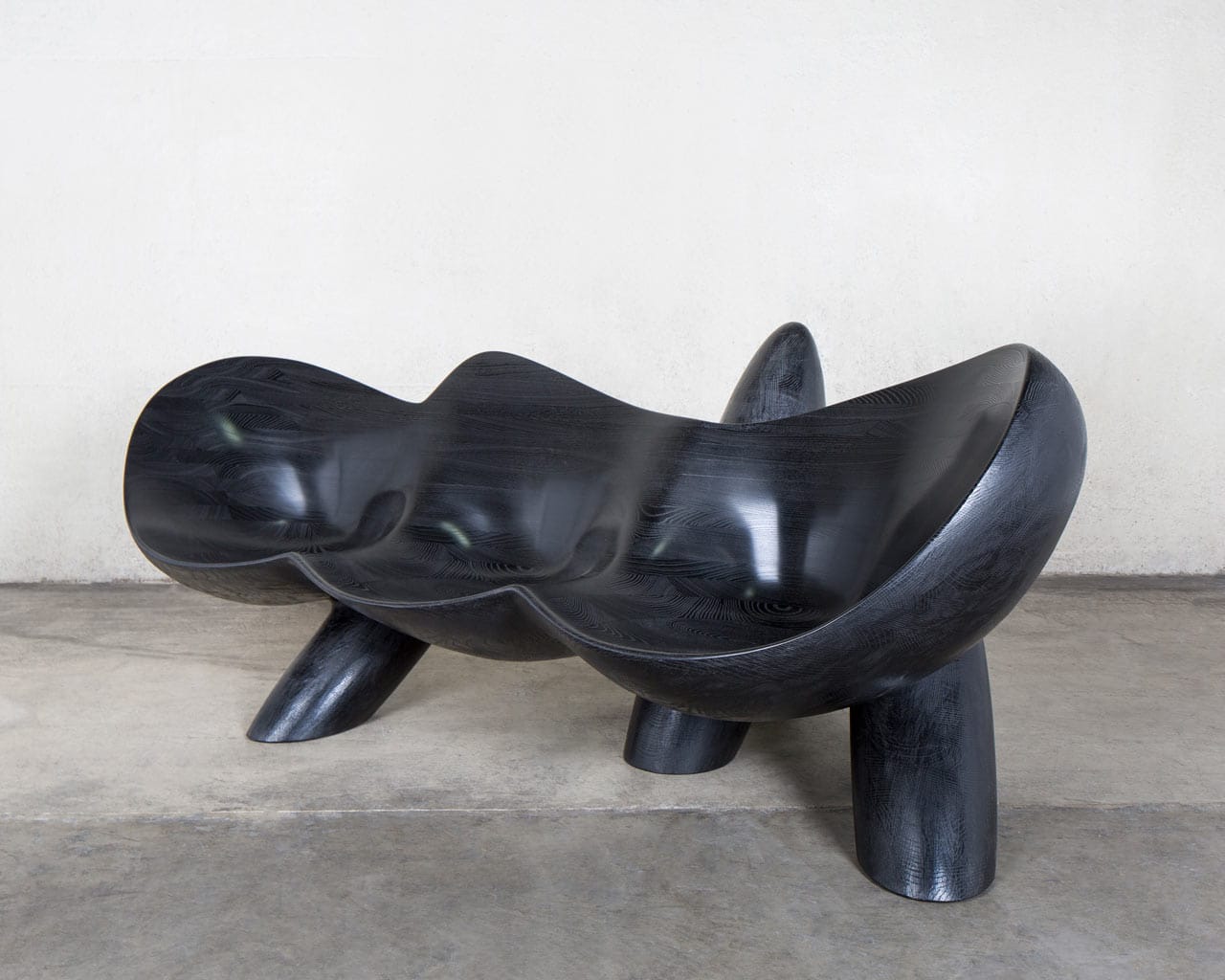
Castle's stack-laminated wood technique became his signature. He glued layers of wood together to form large blocks, which he then carved into fluid shapes. This method allowed him to create bigger, more complex forms than traditional woodworking.
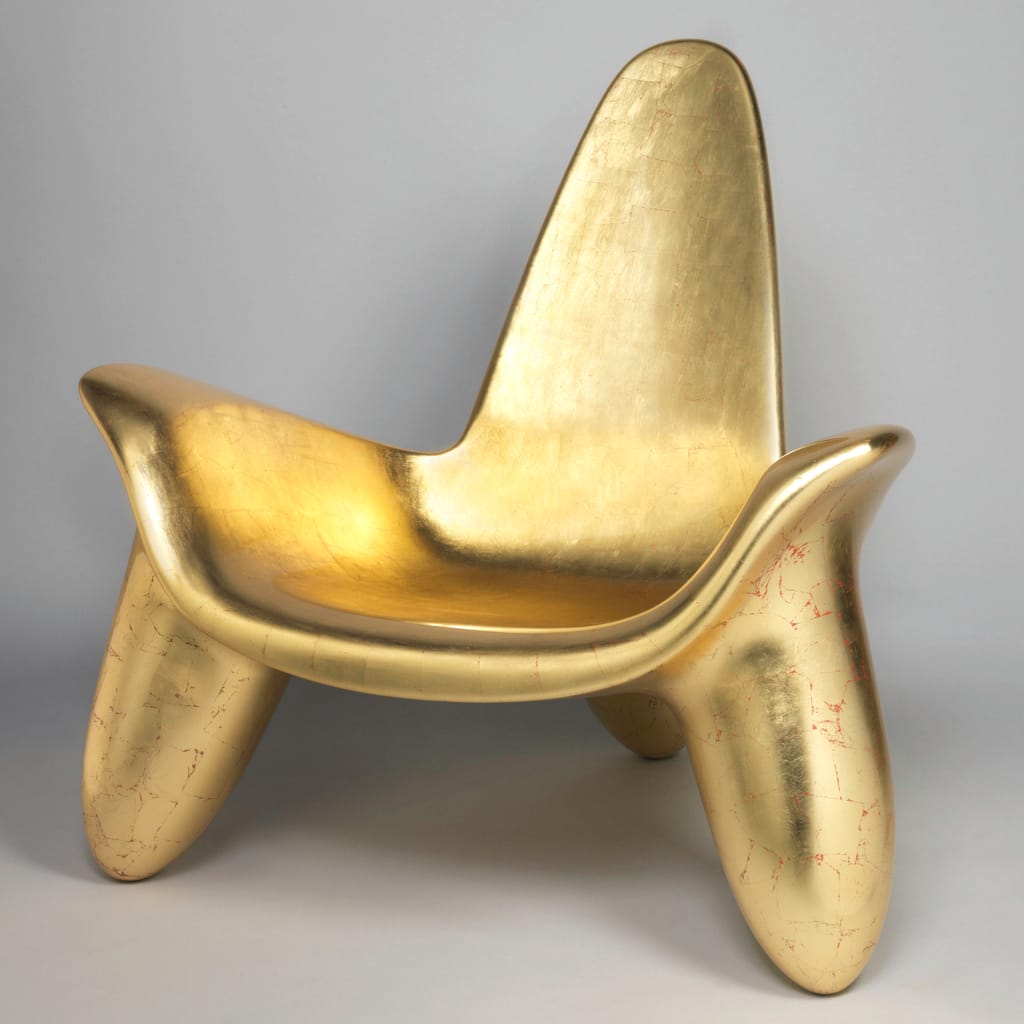
The process was labor-intensive but gave Castle unparalleled freedom. He could sculpt wood like clay, defying its natural properties. This technique led to iconic pieces like his "Triad" chair from 1969.
Castle refined this method over decades. He combined it with digital technology later in his career. 3D scanning and robotic carving helped him realize even more ambitious designs.
Exploration of Fiberglass and Plastics
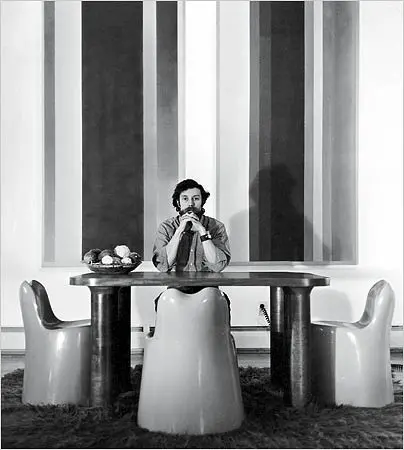
In the 1960s and 70s, Castle began experimenting with new materials. He was drawn to the possibilities of fiberglass and plastics. These materials allowed him to create smooth, organic forms that were difficult to achieve in wood.
Castle's fiberglass pieces often featured bold colors and glossy finishes. He used gel-coated fiberglass to craft chairs and tables with flowing lines. These works had a futuristic look that captured the spirit of the Space Age.
Plastic also played a role in Castle's repertoire. He molded it into unconventional shapes, creating pieces that were both functional and sculptural. His plastic works challenged perceptions of what furniture could be.
Significant Works and Exhibitions
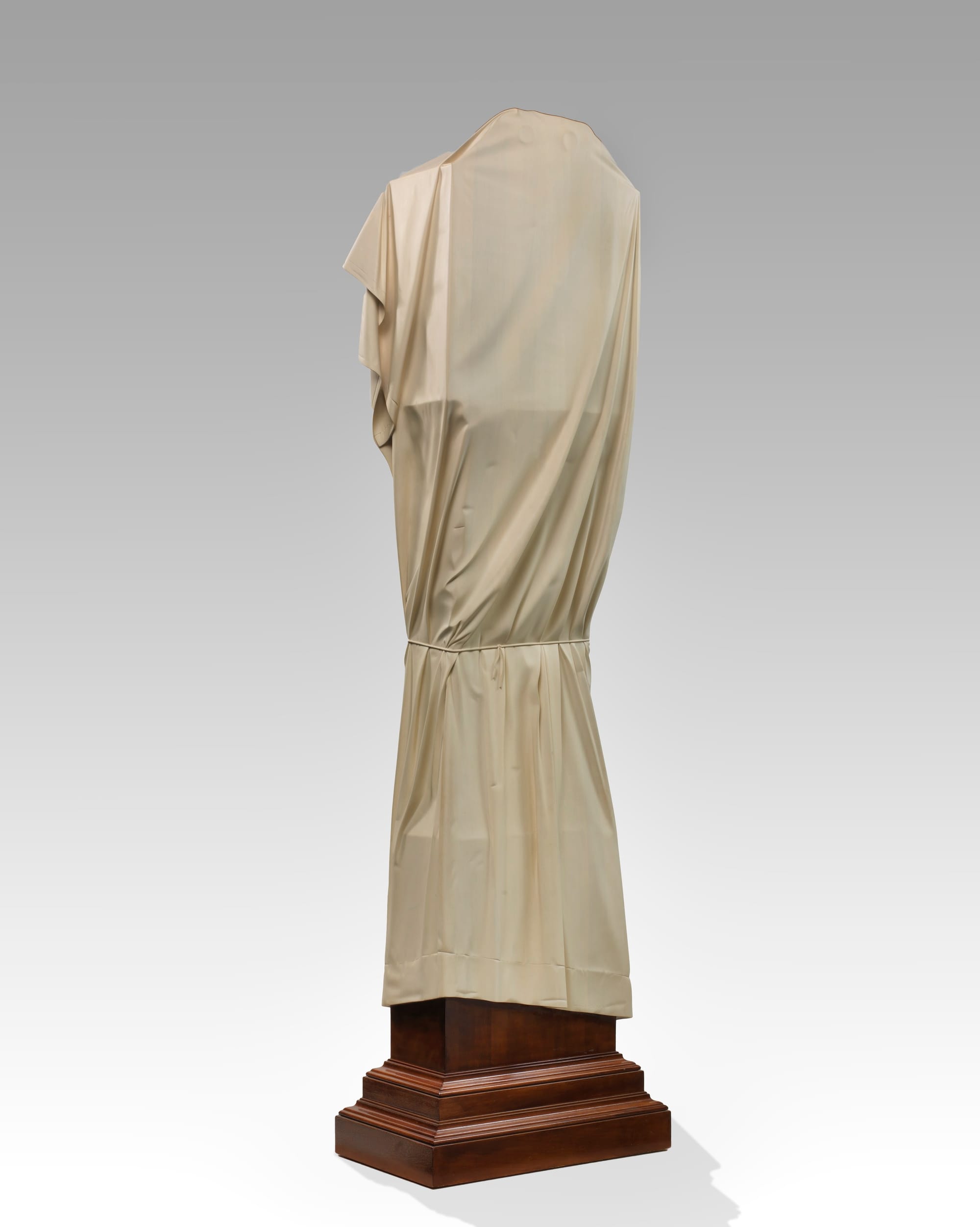
Wendell Castle's art furniture pieces have gained recognition in major museums and galleries across the United States. His innovative designs and craftsmanship have left a lasting impact on the art world.
Landmark Pieces in Major Museums
Castle's works are featured in prestigious institutions like the Metropolitan Museum of Art and the Museum of Modern Art in New York. The Museum of Arts and Design held a special exhibition called "Wendell Castle Remastered" from 2015 to 2016.
This showcase examined Castle's digitally crafted works, highlighting his ability to blend traditional techniques with modern technology. The Brooklyn Museum and The Museum of Fine Arts, Boston also house notable pieces by Castle.
His sculptural furniture items, often blurring the line between form and function, have become iconic representations of the American studio furniture movement.
Showcasing Craft at the Renwick Gallery and Beyond
The Renwick Gallery of the Smithsonian American Art Museum has been instrumental in promoting Castle's work. It has displayed his pieces alongside other pioneering craftsmen, cementing his status in the field.
Other institutions like The Art Institute of Chicago and the Detroit Art Institute have also recognized Castle's contributions. His works are part of permanent collections in many museums, serving as a testament to his enduring influence.
The American Craft Museum (now the Museum of Arts and Design) played a crucial role in showcasing Castle's early works. These exhibitions helped establish him as a leading figure in the art furniture movement.
Castle's Legacy and Honors
Wendell Castle's impact on furniture design and art earned him many prestigious awards. His influence continues to shape new generations of artists and designers.
Awards and the Gold Medal Recognition
Wendell Castle received numerous honors for his groundbreaking work. The American Craft Council awarded him their Gold Medal, the highest recognition in the field. This award celebrated Castle's lifetime of innovation and creativity.
Castle also earned the Modernism Lifetime Achievement Award. This honor recognized his role in shaping modern furniture design. The Louis Comfort Tiffany Foundation granted him a special award for his artistic contributions.
The National Endowment for the Arts named Castle a "Visionary of the American Craft Movement." This title highlighted his unique vision and lasting impact on American art.
Influencing Future Generations
Castle's legacy lives on through the many artists he inspired. He taught at the School of American Craftsmen, sharing his knowledge with young designers. Castle later founded the Wendell Castle School, where he trained a new wave of furniture makers.
His techniques, like stack lamination, are still used by artists today. Many see Castle as the Father of the Art Furniture Movement. This title reflects how he changed the way people think about furniture as art.
Castle's work continues to inspire new ideas in design. His pieces are displayed in museums, reminding visitors of his bold, artistic approach to furniture.
Contact Us for a Custom Furniture Piece
Creating custom furniture is an art that blends craftsmanship with personal vision. Wendell Castle's influence on furniture design continues to inspire artisans today.
For those seeking a unique piece that embodies Frid's principles, reaching out to a skilled woodworker is the first step. We welcome the opportunity to bring your ideas to life.
When contacting, be prepared to discuss:
- Your design preferences
- Intended use of the piece
- Preferred wood types
- Budget considerations
- Timeline expectations
Clear communication is key to ensuring the final product meets your needs. Providing sketches or inspiration photos can help convey your vision.
We offer custom tropical hardwood furniture for a distinct aesthetic. These pieces often showcase the natural beauty of exotic woods.
Remember that custom work requires time and patience. Quality craftsmanship cannot be rushed, but the result is a one-of-a-kind piece that will last for generations.
You can create furniture that honors Wendell Castle's legacy while reflecting your personal style. The process of commissioning custom work is both exciting and rewarding.
F.A.Q.
How to contact us?
- For commission work or pieces, contact us here, simply contact us via e-mail at jefh@jefhwoodshop.com
How Much Does It Cost to Custom Build a Piece?
It really depends on the piece, but from the start, we can say that it costs more than what you can find off the shelf. You ask for a custom piece when you want something one-of-a-kind, not easily or possibly found elsewhere, or made to your specifications.
Given the nature of our custom builds, it is extremely rare to find any piece below $1,000 unless you're talking about very small items or simplistic builds, which are rare.
Here are some examples of price ranges:
- Nightstands: $800 to $2,500
- Beds: $4,500 to $10,000
- Dining tables: $3,500 to $12,000
- Chairs: $800 to $2,500
- Consoles, credenzas, etc.: $2,500 to $7,000
Again, there is no fixed price. Each piece is quoted based on wood selection and complexity.
What Woods Do We Work With?
We primarily work with tropical hardwoods, and you can read about some of our favorites here. The reason for this is our focus on tropicalized furniture.
- Teak
- Yellowheart
- Tigerwood (Zebrawood)
- Spanish Cedar
- South American Mahogany
- Santos Mahogany
- Purpleheart
- Ipe
- Cumaru
- Cocobolo
That said, we are more than happy to work with domestic species from the USA, as this is the best way to balance price and minimize the environmental footprint of importing international wood.
There are some incredible domestic woods we have access to, such as:
- Walnut
- Oak
- Maple
- Cherry
- Ash
- Hickory
- Birch
How Long Does It Take to Build a Piece?
Typically, it takes 4 to 8 weeks, but the main factor will be availability. Get in touch, and we can discuss when we could start.
Where Are You Located and Where Do You Deliver?
We are currently based in South Florida, specifically serving the local Palm Beach County area. We offer white-glove delivery throughout most of Florida. We also accept orders from outside of Florida, both nationally and internationally, but this will depend on how safely we can either deliver the piece ourselves or ensure proper packaging for shipping.


